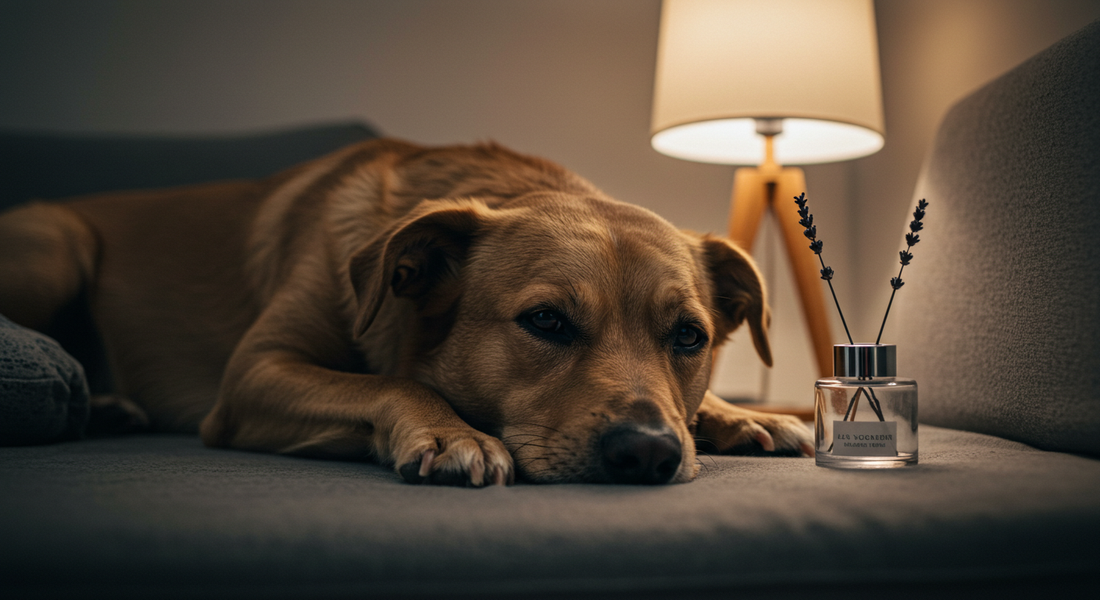
Creating a Calming Home Environment for Anxious Dogs
Share
Introduction
For many pet parents, watching their dogs struggle with anxiety can be heartbreaking. Dogs experience stress and worry for a variety of reasons such as loud noises, unfamiliar visitors, or being left alone. Unlike humans, they can’t voice their concerns, so it’s our responsibility to create an environment that nurtures calm and comfort.
At Snuggle&Go, we believe that a supportive home environment is the foundation of your dog’s emotional well-being. This article will explore practical strategies, soothing products, and thoughtful routines you can introduce at home to help your anxious dog feel safe and relaxed.
Understanding Canine Anxiety
Dog anxiety manifests in many ways including pacing, whining, destructive behavior, hiding, or excessive barking. The most common triggers include separation anxiety when dogs feel distressed being away from their owner, noise phobias such as fear of thunderstorms, fireworks, or household appliances, social anxiety when dogs are uncomfortable around strangers or other pets, and environmental changes such as moving to a new home or changes in family routine.
Recognizing these triggers is the first step toward building an effective calming environment.
1. Create a Dedicated Cozy Space
Every anxious dog needs a retreat that feels safe and comforting. Choose a quiet corner away from heavy foot traffic and add a plush dog bed or crate with soft blankets. Include familiar items like favorite toys or a piece of your clothing with your scent. Keep lighting soft and avoid bright overhead fixtures. This cozy spot serves as your dog’s personal sanctuary when they feel overwhelmed. A covered crate or portable kennel cover can further enhance the feeling of security.
2. Use Calming Scents and Sounds
Dogs respond strongly to sensory cues. Lavender and chamomile scents are widely recognized for their calming effects and can be introduced with pet-safe essential oil diffusers or scented sprays. White noise machines or soft classical music can mask outside sounds like traffic or fireworks. Calming sprays for beds and blankets also work well to create relaxation. By engaging your dog’s senses, you create an atmosphere that signals safety and tranquility.
3. Provide Interactive Toys for Mental Stimulation
Boredom often fuels anxiety, so enrichment activities are essential. Puzzle feeders and treat-dispensing toys keep your dog’s mind busy. Chew toys reduce stress by satisfying natural instincts. Rotating toys weekly maintains novelty and excitement. Interactive play not only reduces stress but also builds confidence and independence.
4. Establish a Predictable Routine
Dogs thrive on structure and consistency. Feeding and walking your dog at the same times daily creates stability. A calming evening ritual such as gentle play, a massage, or quiet cuddle time helps them wind down. Keep departures and arrivals low-key to reduce separation stress. Predictability reassures your dog that they can rely on you.
5. Incorporate Calming Products
There are many products designed to ease canine anxiety. Weighted blankets mimic the sensation of being hugged. Anxiety vests apply gentle pressure that helps soothe stress. Chewable calming supplements with ingredients like chamomile or L-theanine may support relaxation. Natural paw balms infused with lavender provide both comfort and a calming scent. At Snuggle&Go, we focus on offering calming solutions that are practical, safe, and designed with your pet’s comfort in mind.
6. Manage Noise and Visual Triggers
If your dog reacts strongly to environmental stressors, small adjustments make a big difference. Blackout curtains block visual triggers such as passing cars or people. Sound-dampening rugs and textiles soften indoor noise. During fireworks or storms, guiding your dog to their safe space with calming background sounds can shield them from overstimulation.
7. Build Trust Through Training and Bonding
Anxiety often stems from insecurity, so training and bonding activities reinforce trust. Positive reinforcement training builds confidence. Calm activities such as grooming or brushing associate touch with comfort. Slow, reassuring movements and gentle tones during stressful times help your dog understand they can depend on you. Training becomes more than obedience; it is a shared language of trust.
8. When to Seek Professional Help
Some cases of anxiety require professional support. Seek help if your dog’s anxiety leads to destructive behavior or self-harm, if stress persists despite adjustments at home, or if they show extreme fear during specific events. Consulting a veterinarian or animal behaviorist ensures your dog receives tailored care.
Conclusion
Helping an anxious dog feel at ease begins with intentional choices in the home. By creating cozy spaces, using calming scents, providing enrichment, and introducing supportive products, you can transform your house into a haven of comfort and security.
At Snuggle&Go, we believe that every dog deserves a safe and peaceful environment. With calming accessories, thoughtful routines, and plenty of love, your furry companion can enjoy a truly stress-free home.

